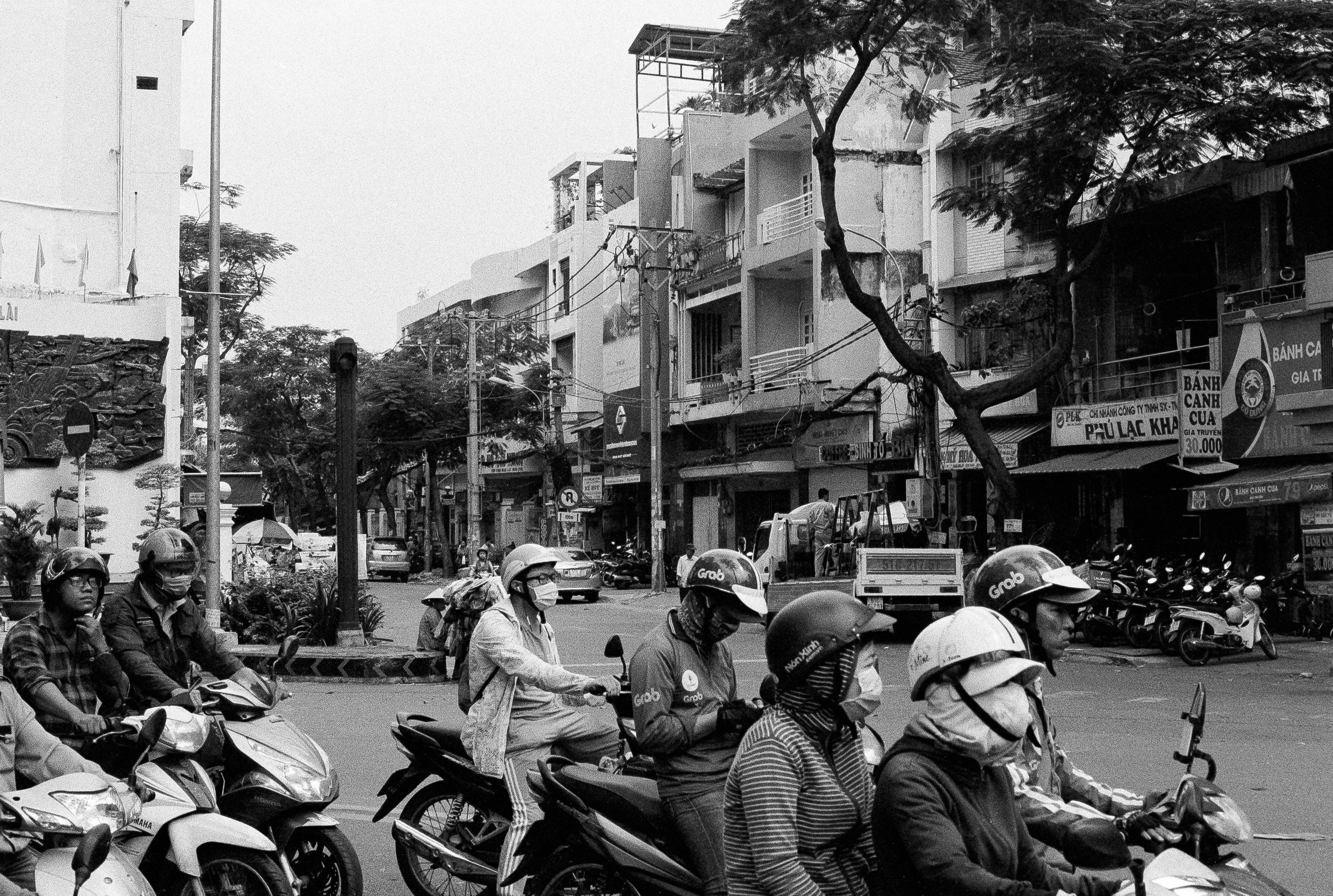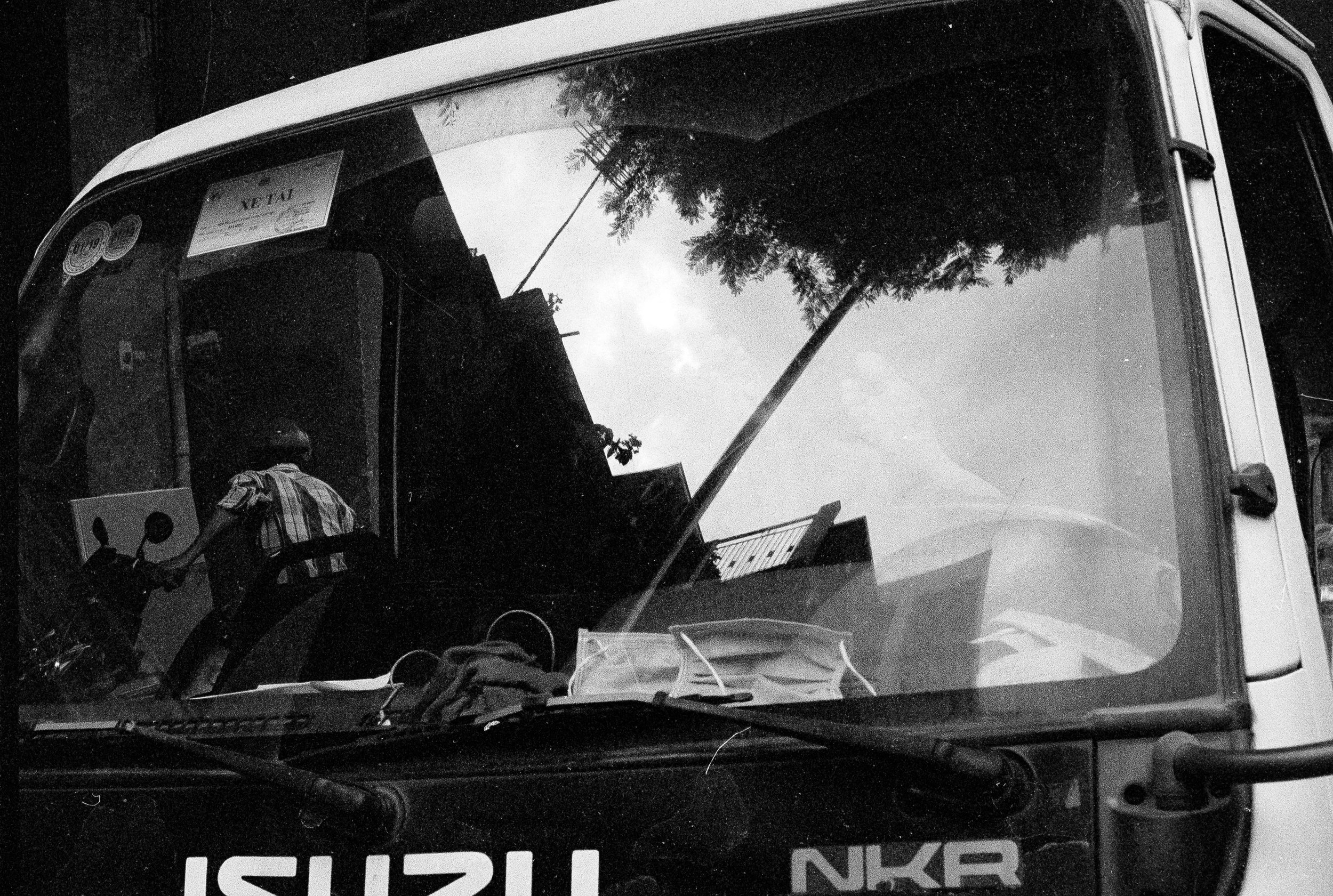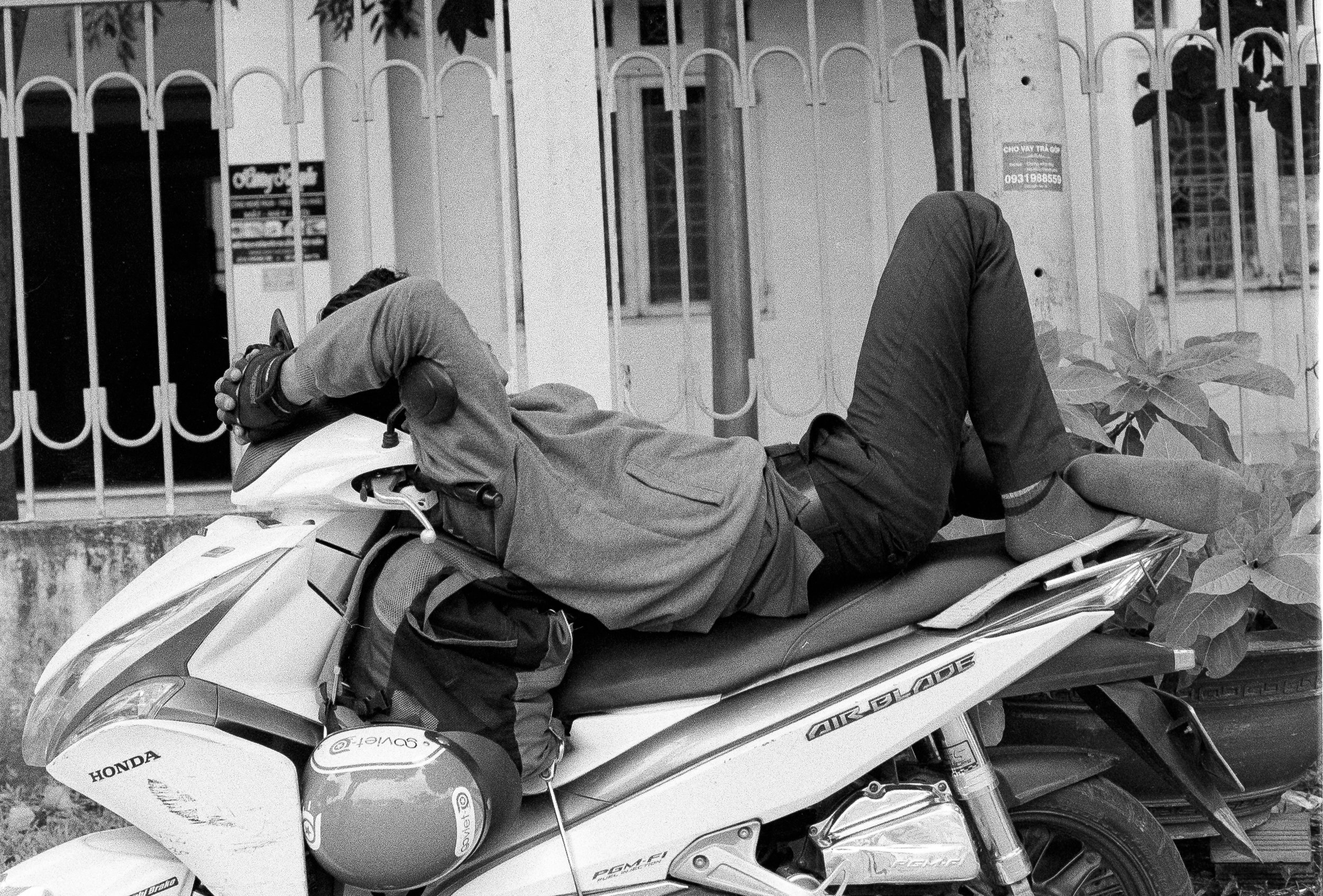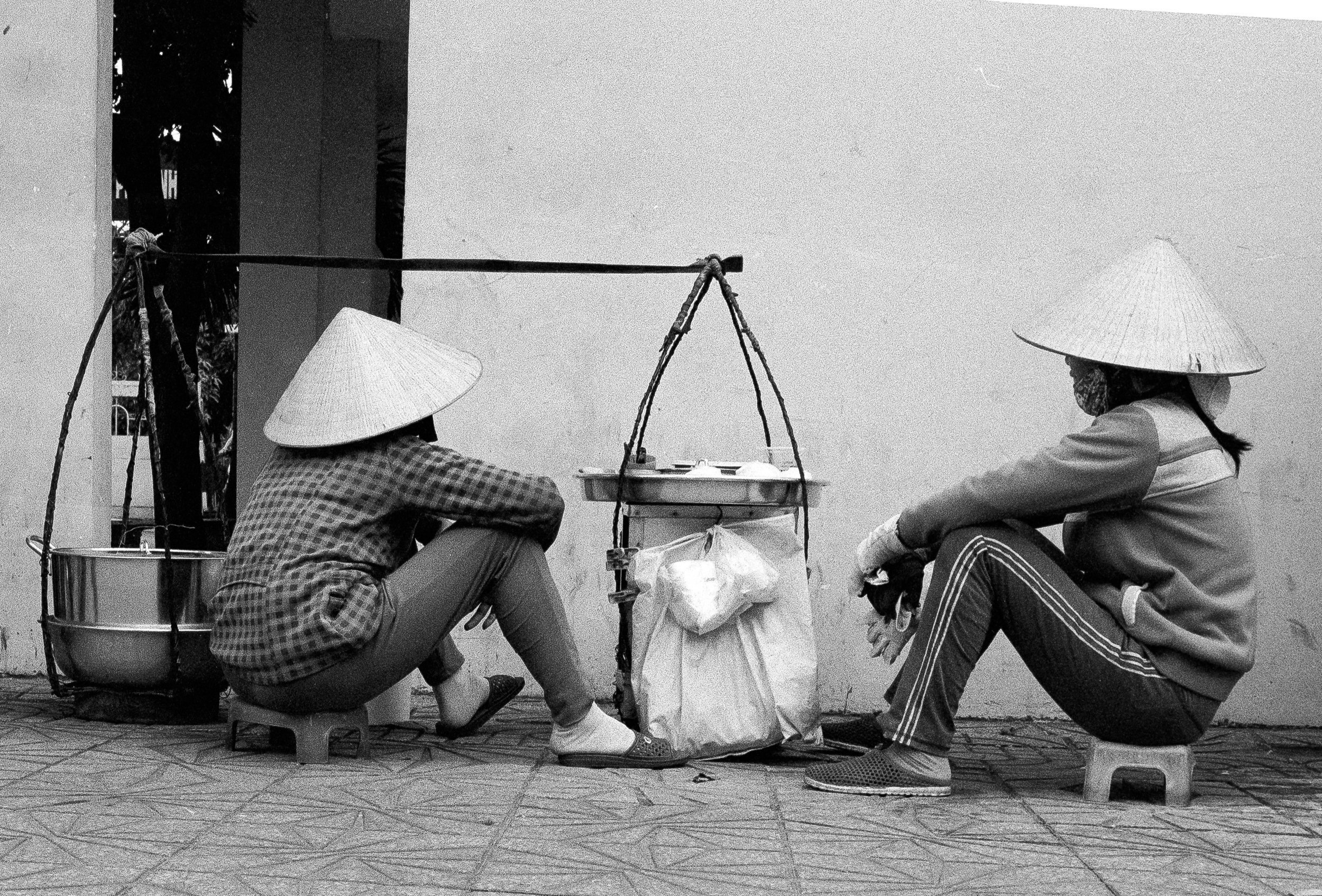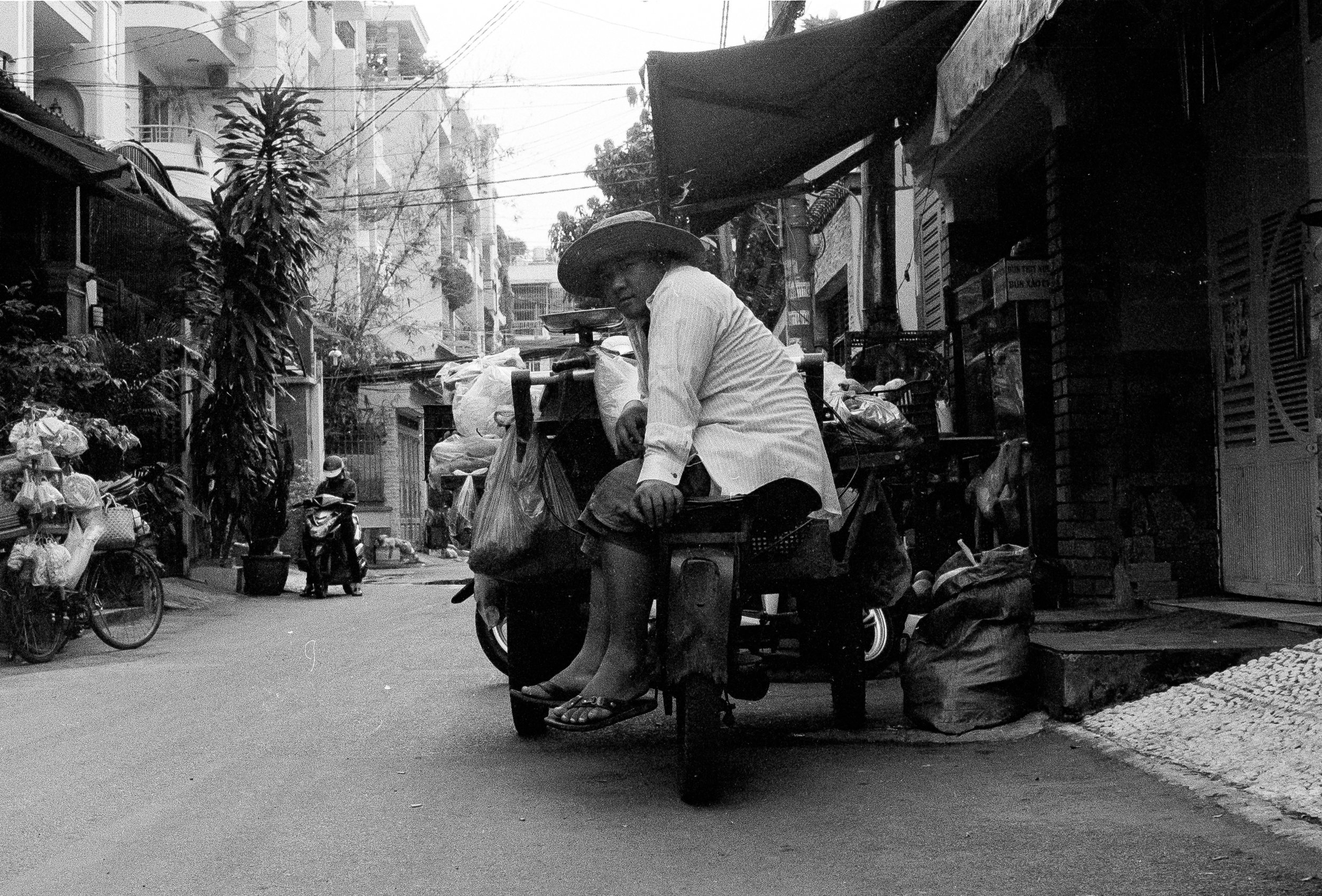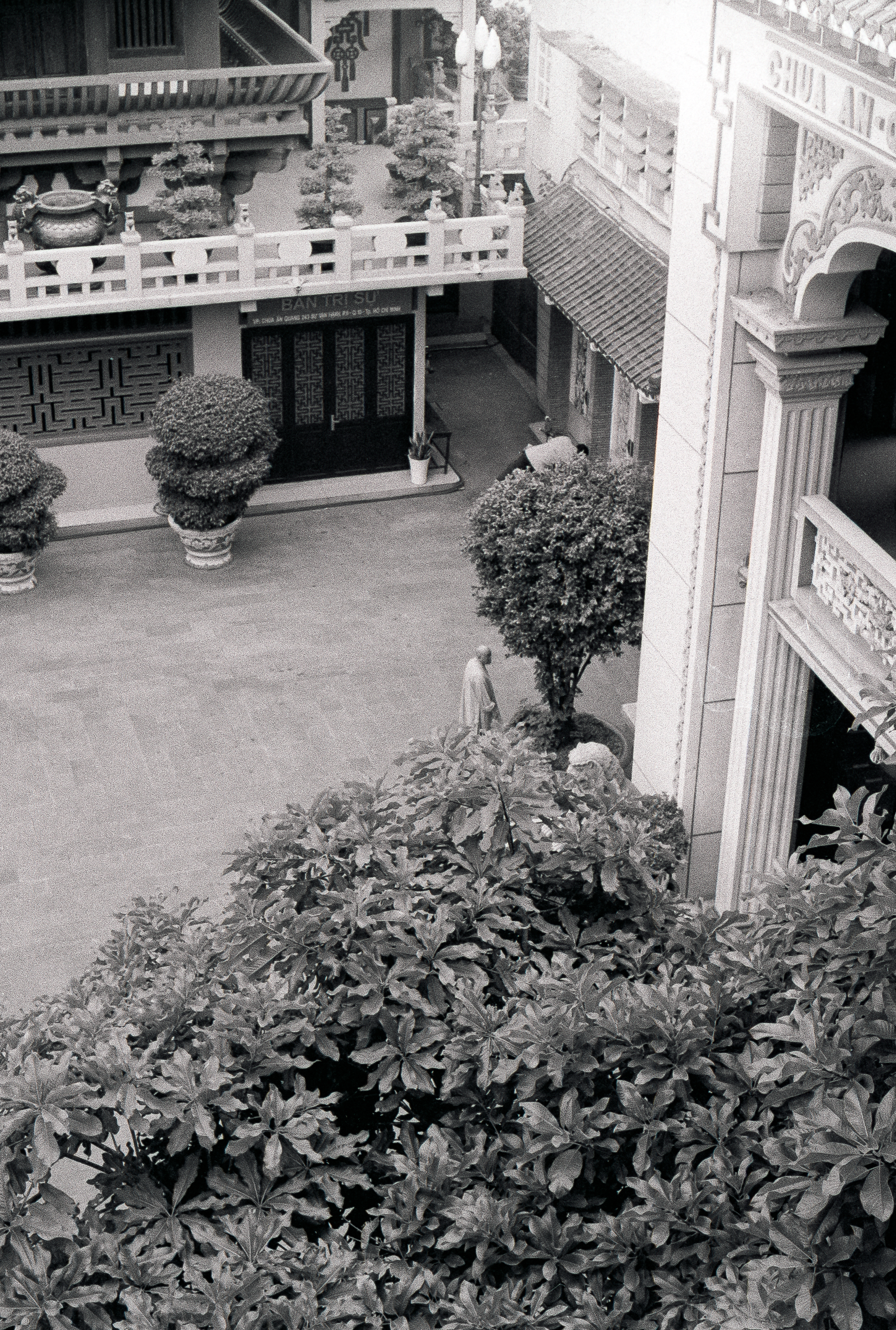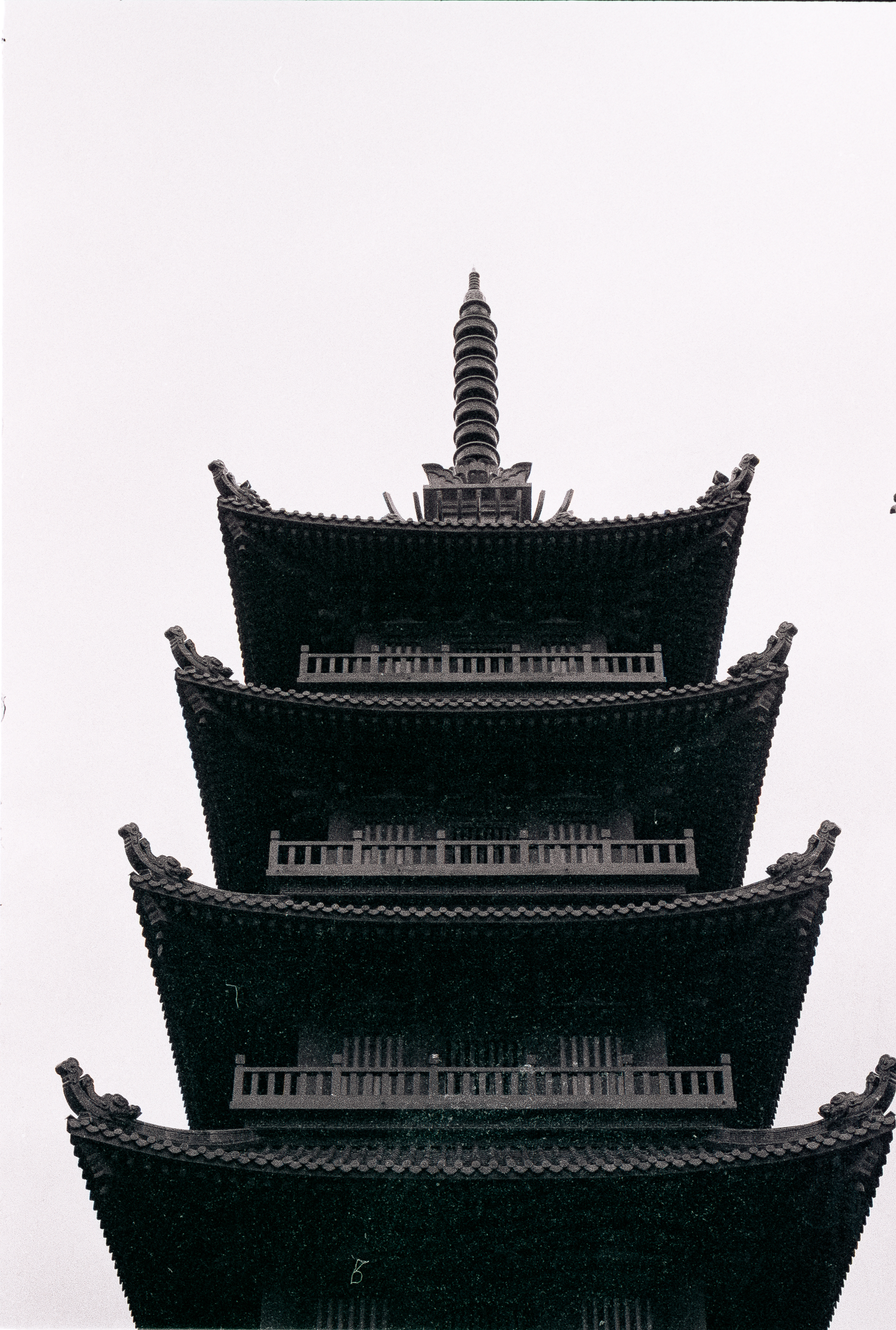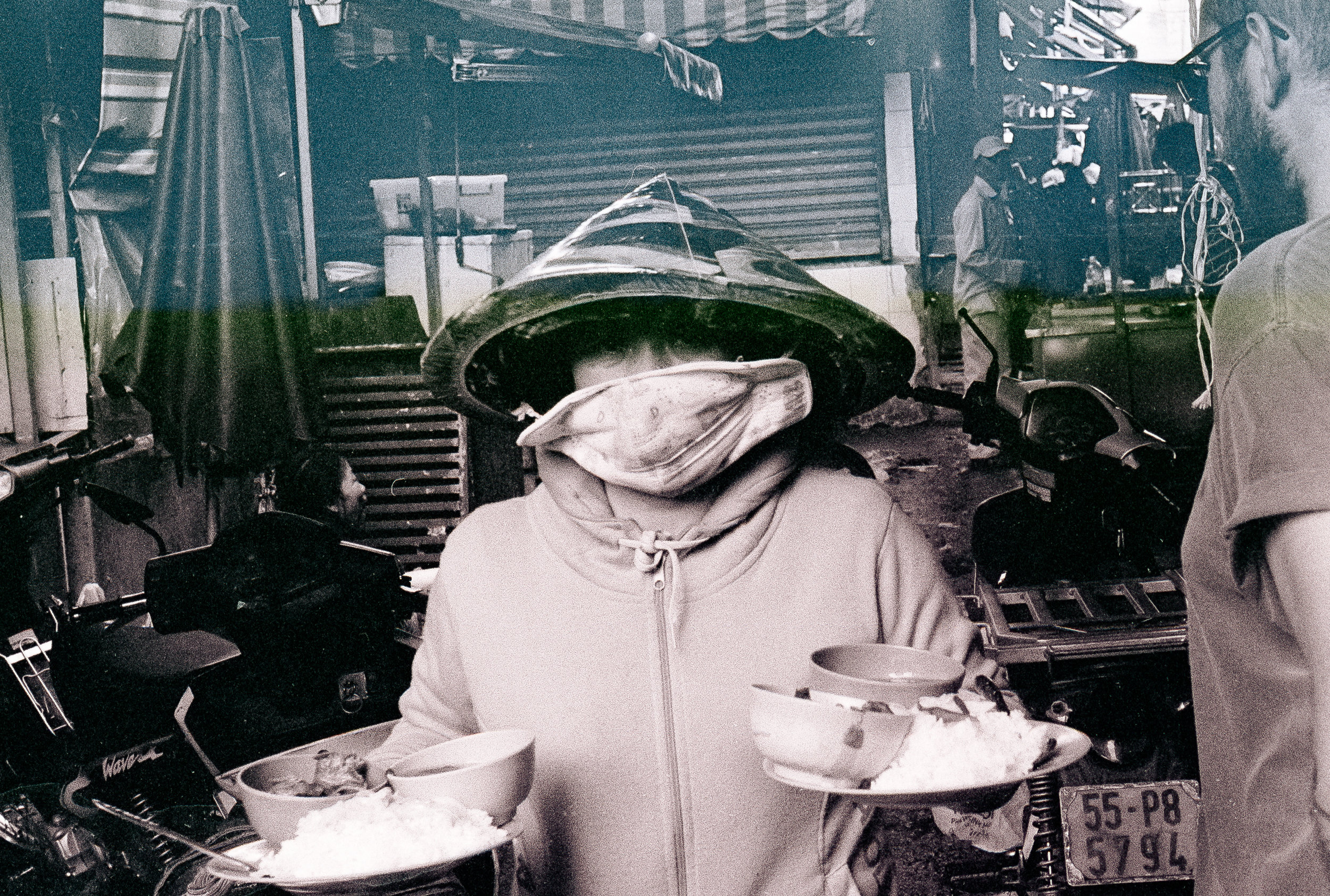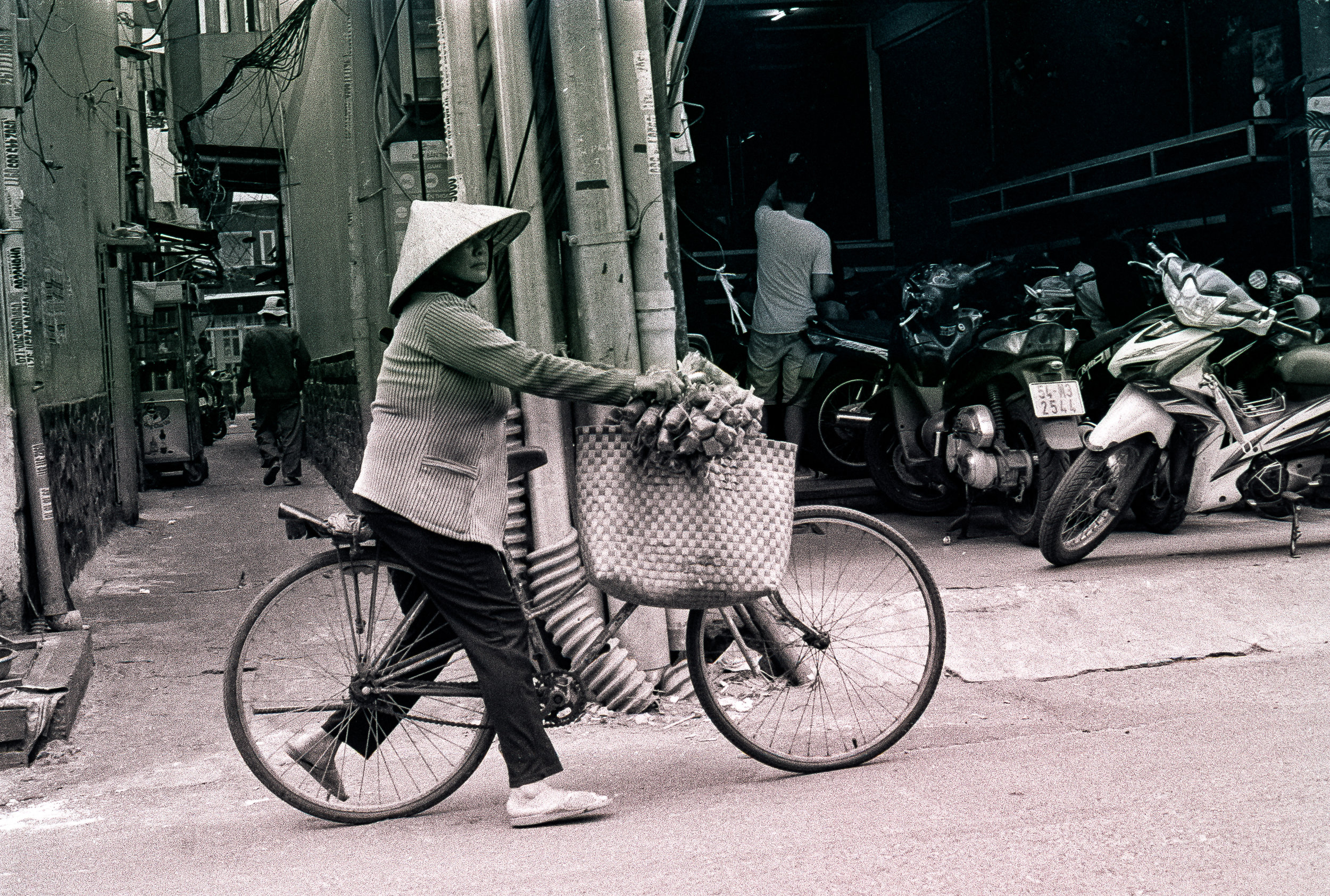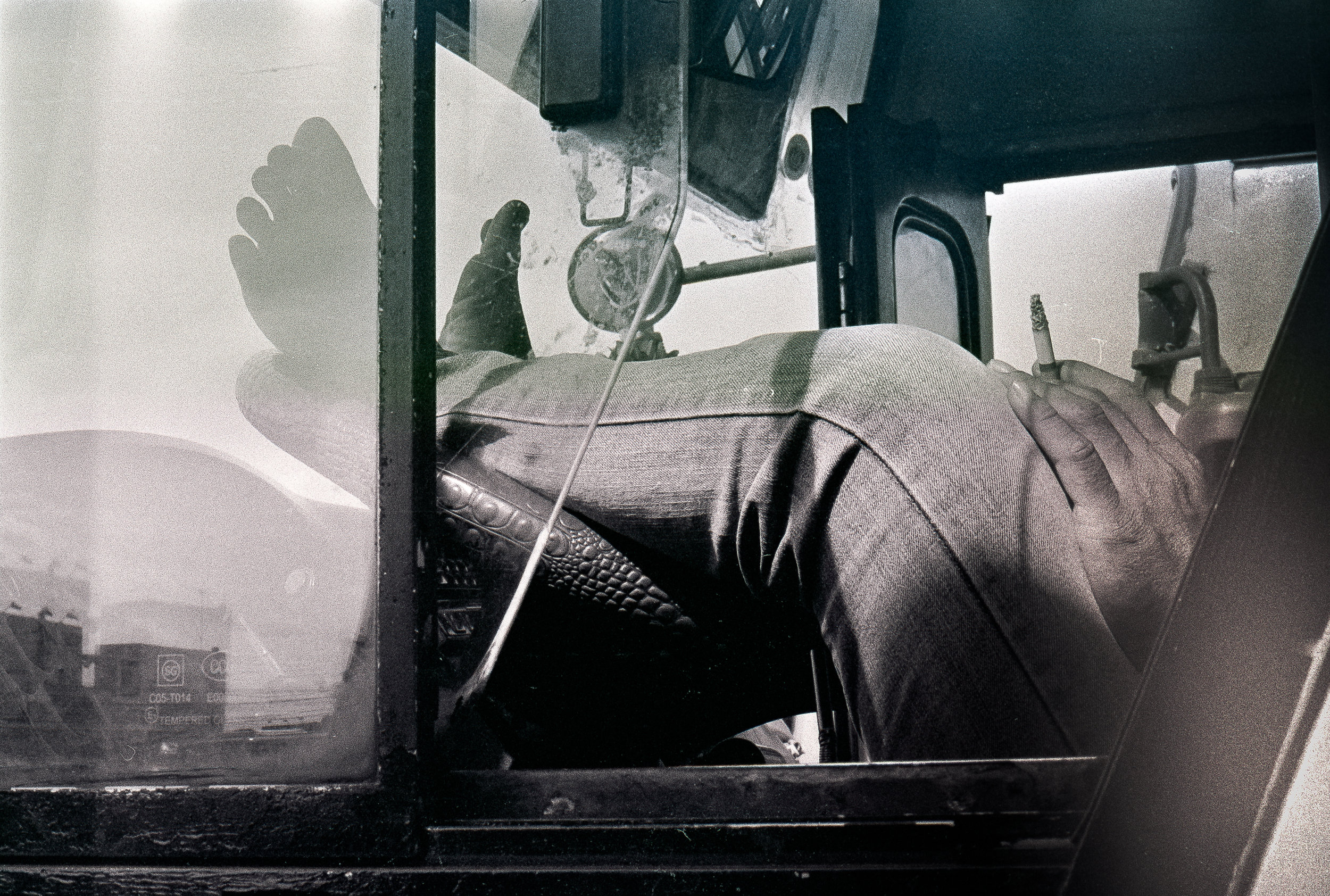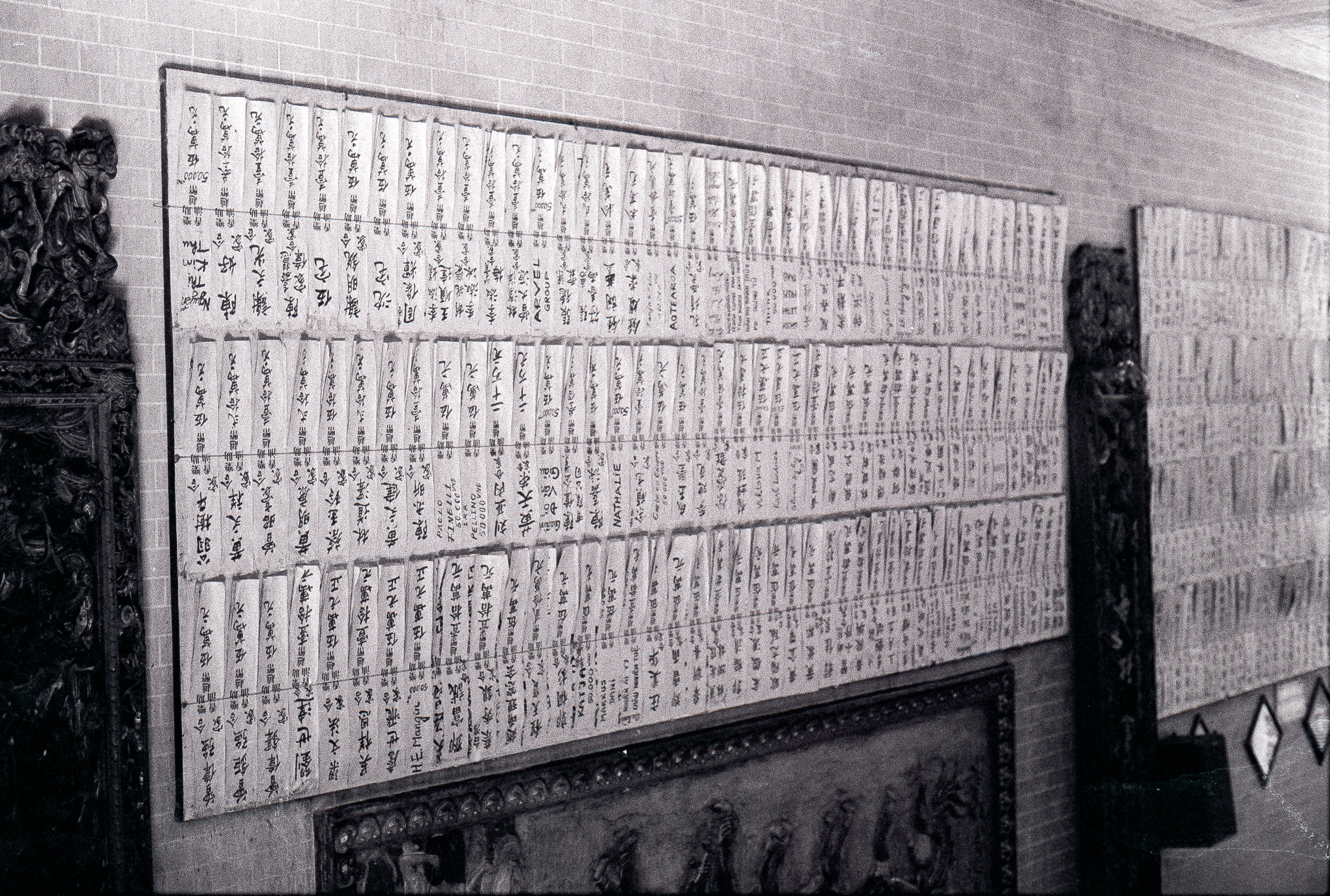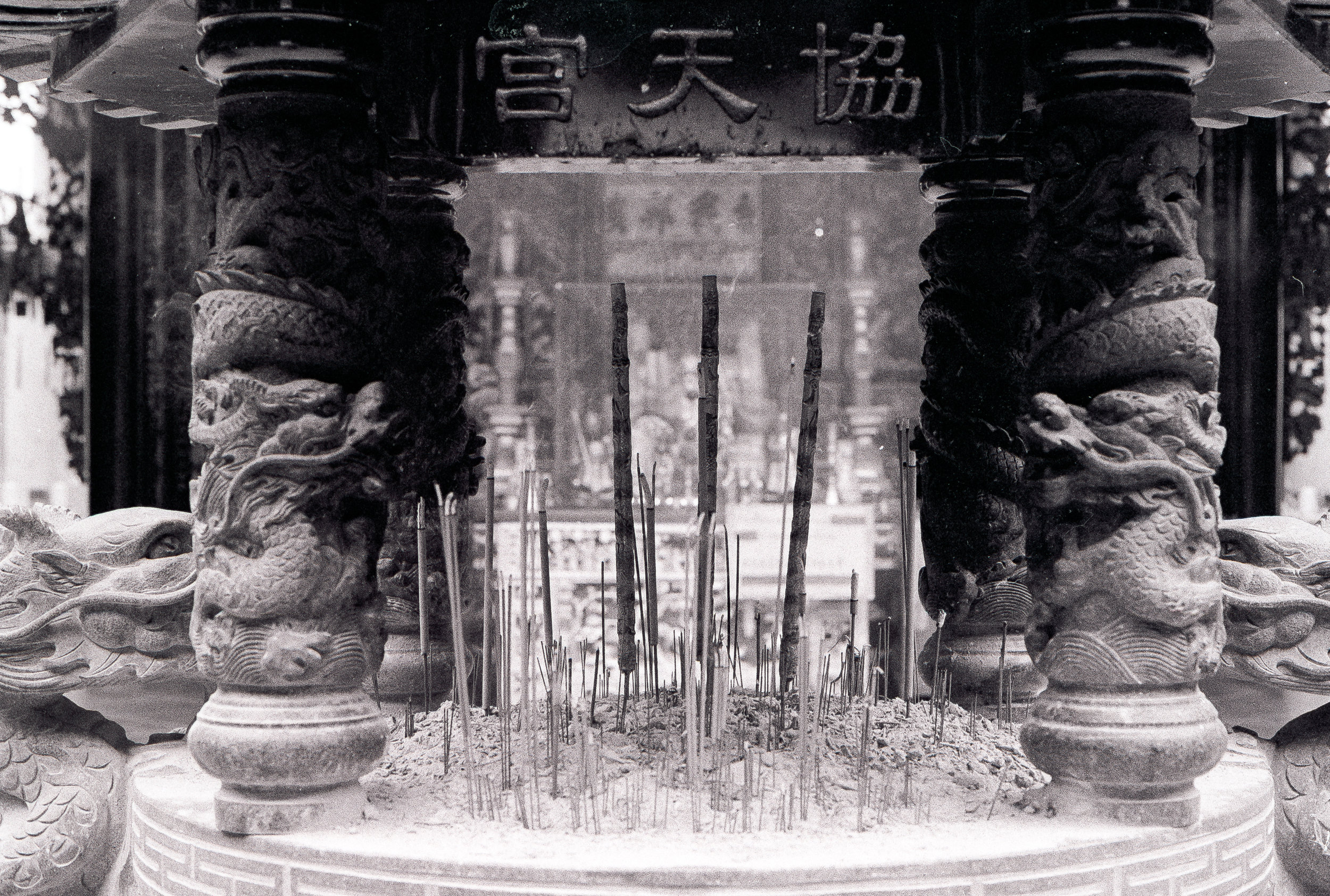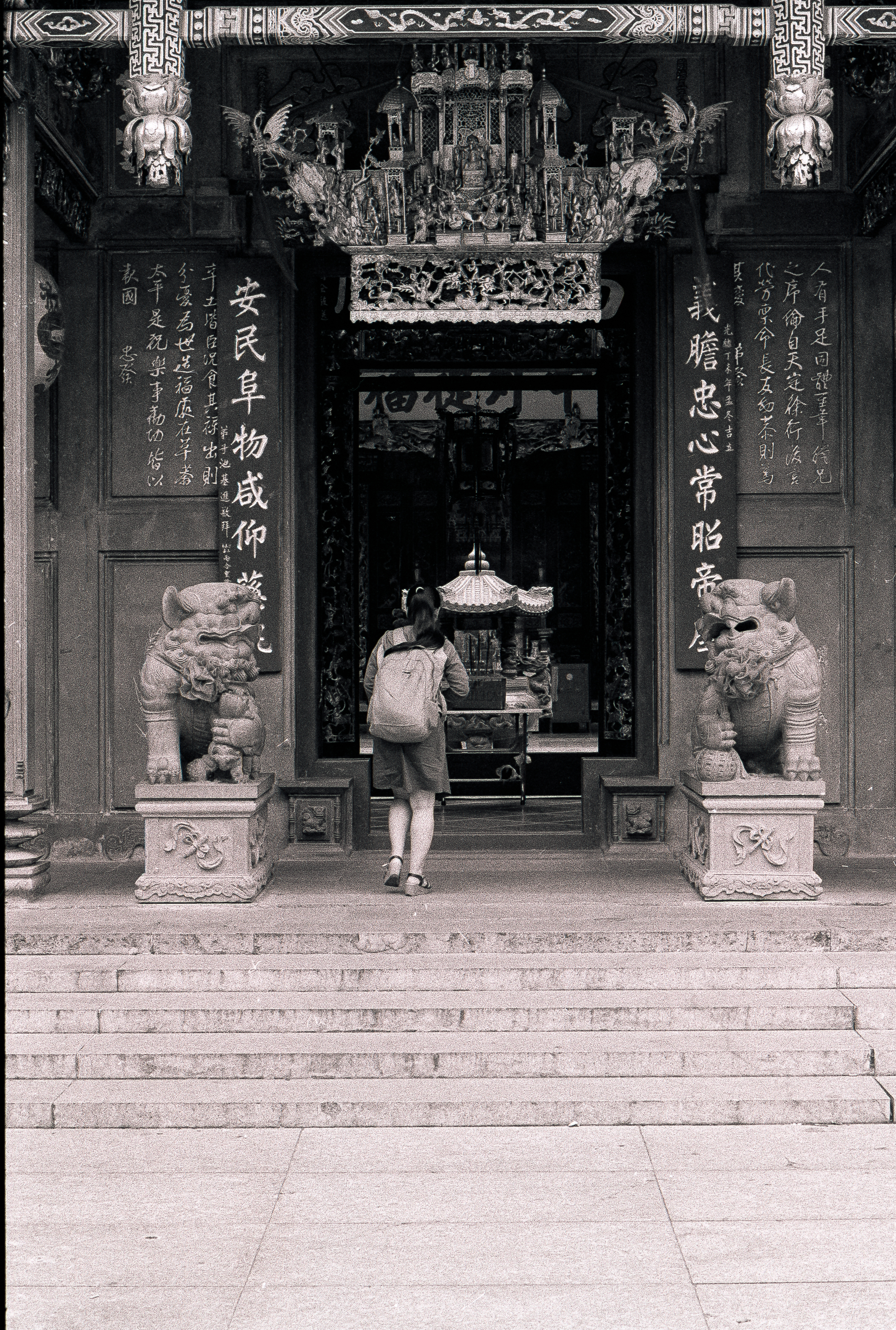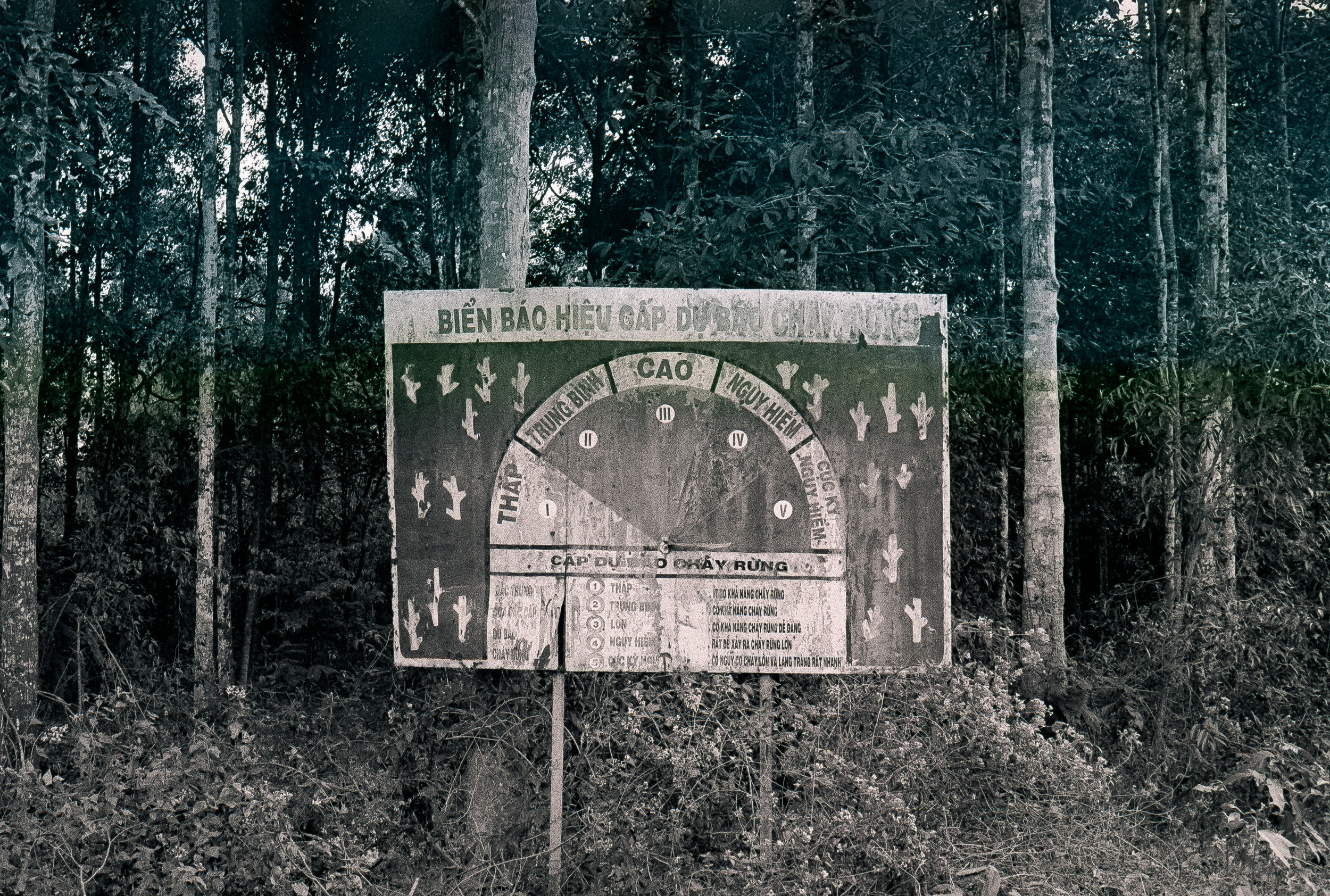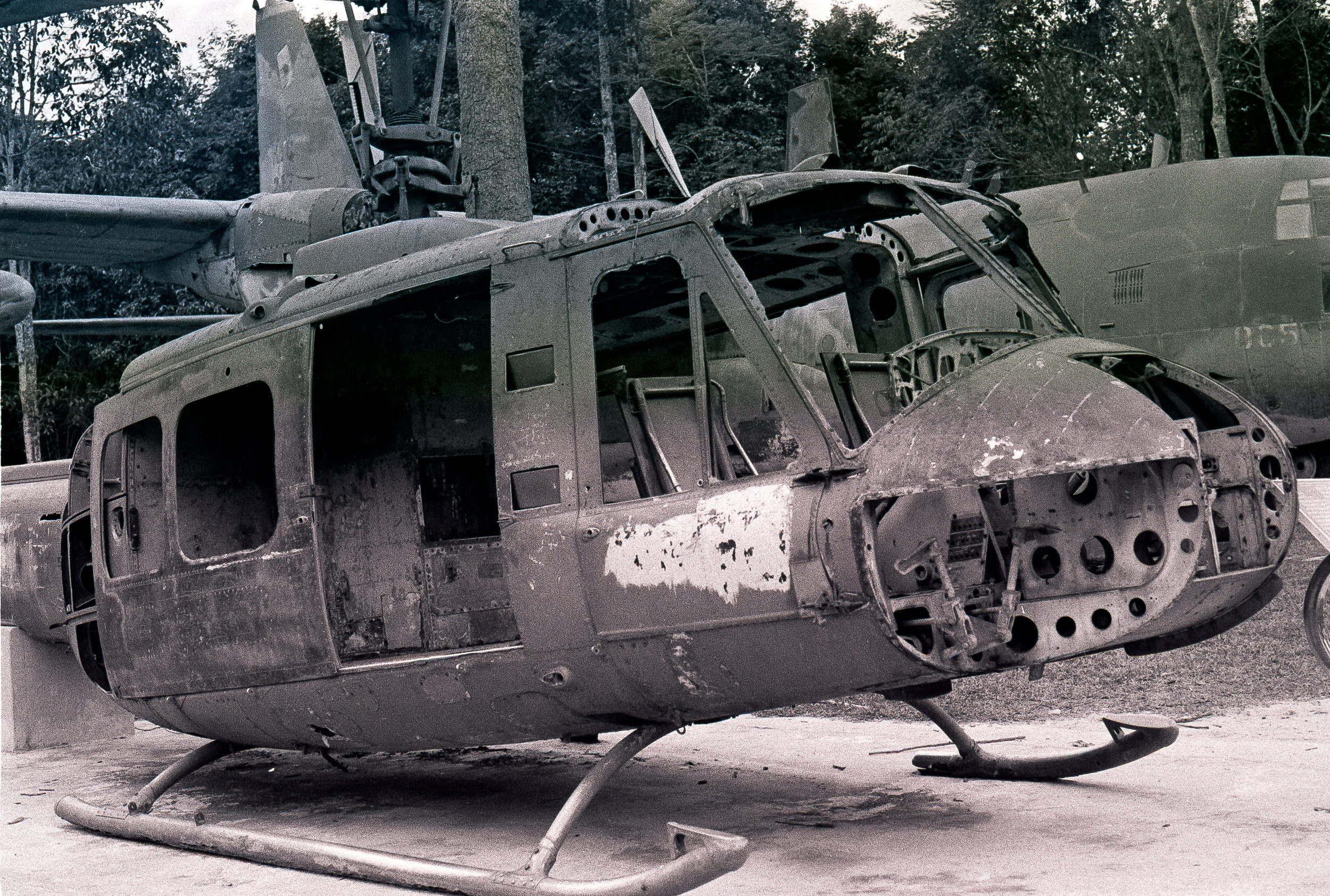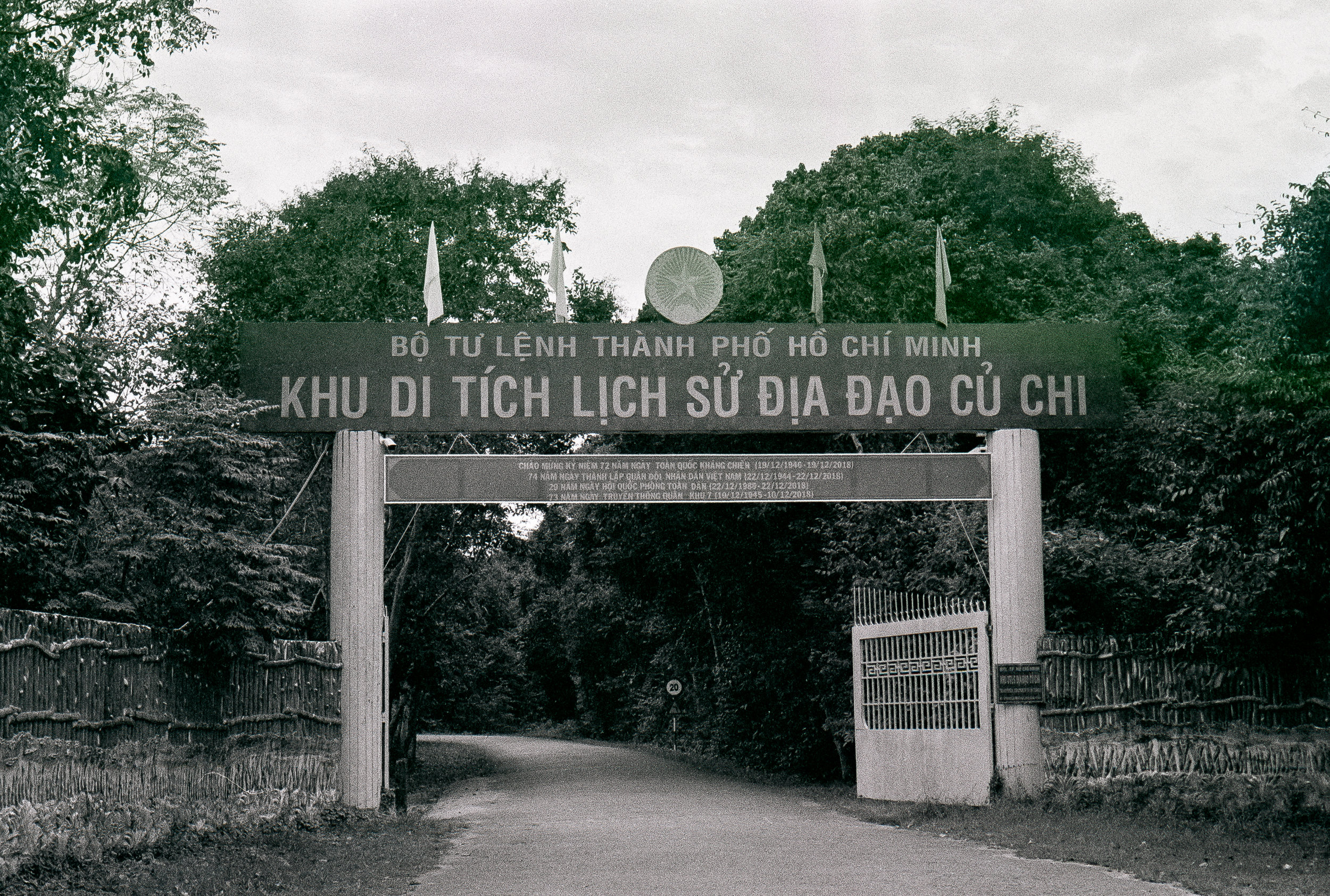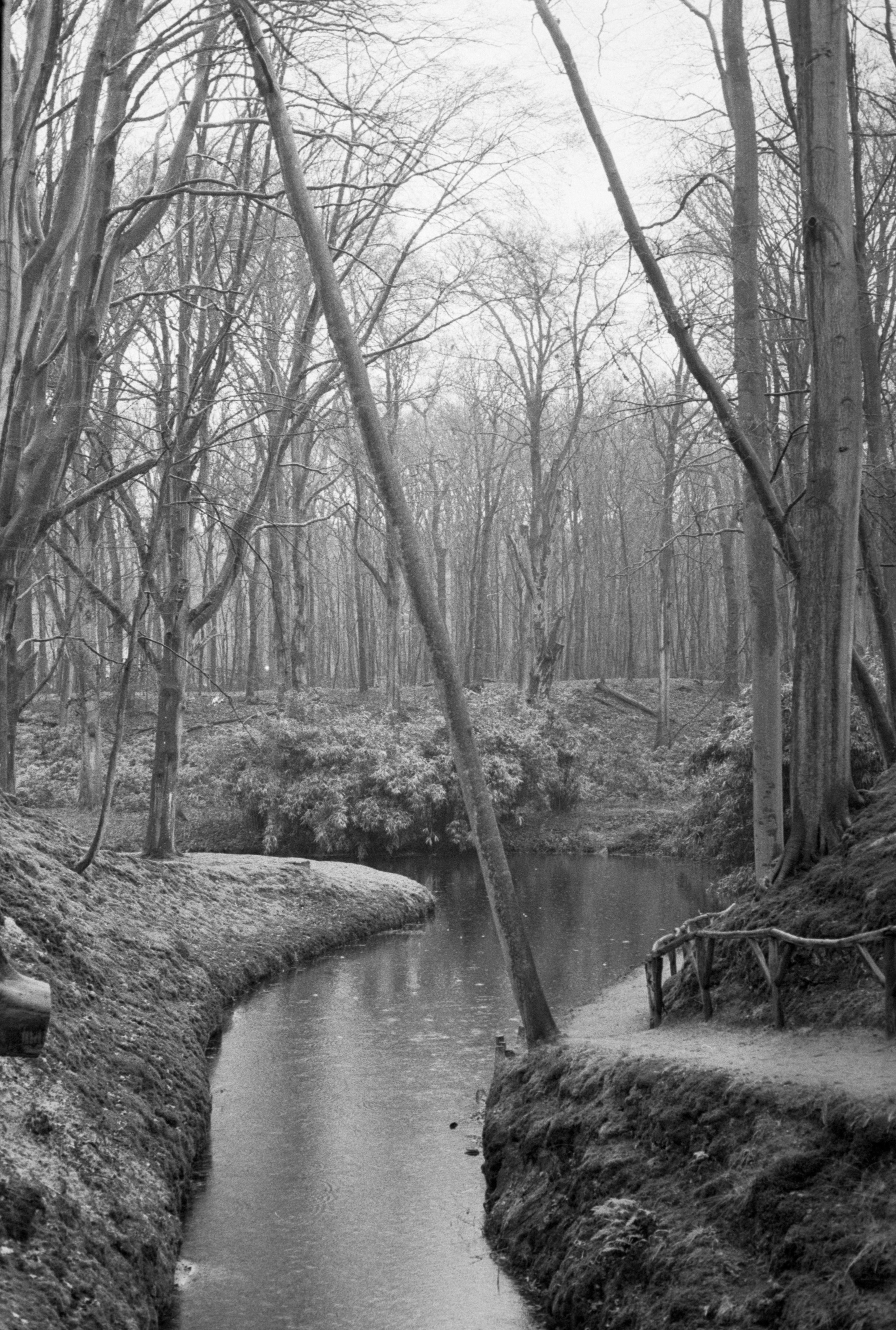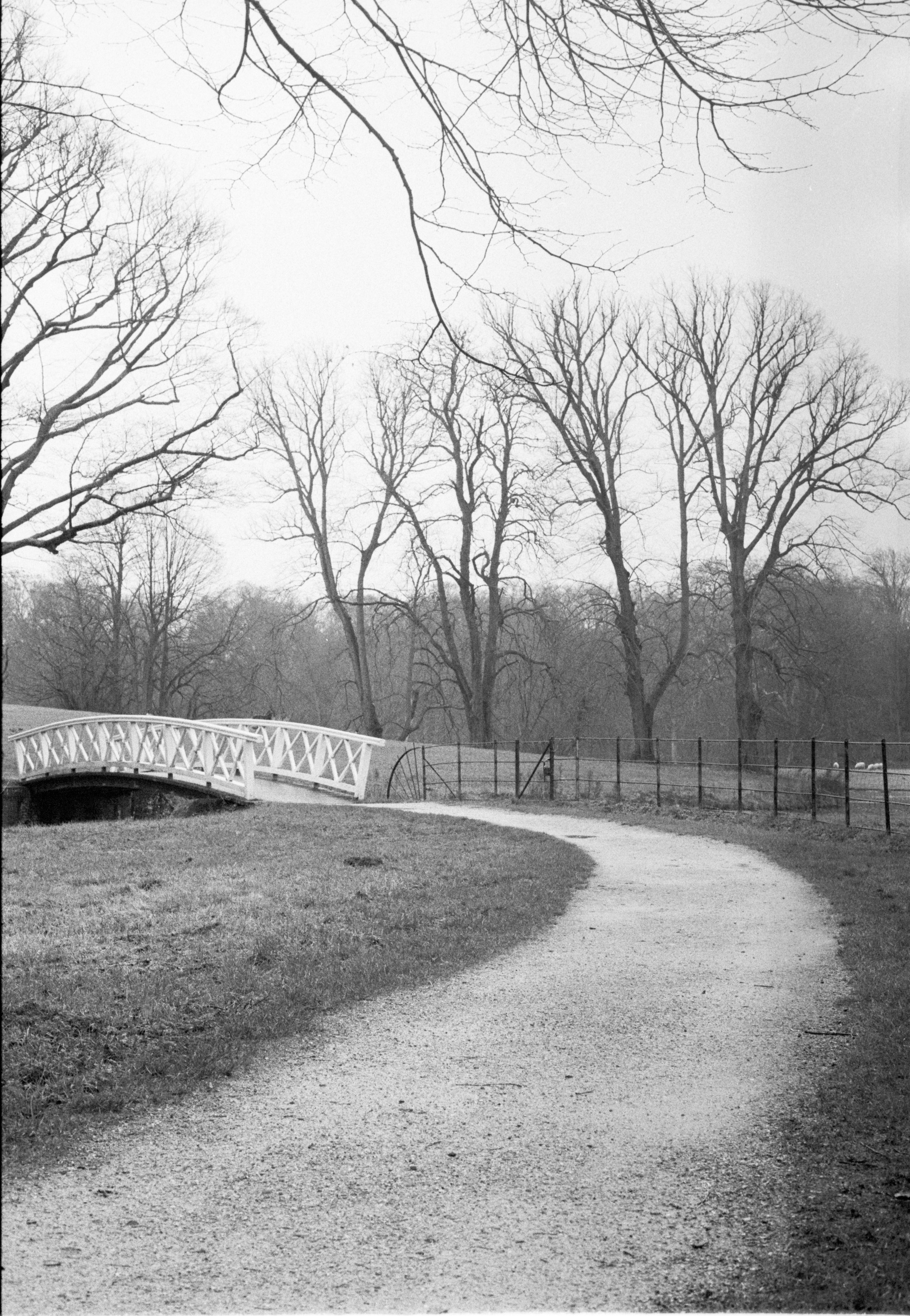Learn from this mistake... My adventure with Ilford PAN F and a jetlag.
Happy new year to you all!
First blog post of 2019. And let me start off by saying that I appreciate every single one of you that takes the time to read my articles.
Thinking in soundtracks…
I was supposed to write this earlier in the day but I had a severe case of procrastination and I finally bought magnum contact sheets. Than my monkey mind got tricked in by looking at my scans again because if all the master could make it look that beautiful back in the day. I should’t have a problem with all this modern equipment!
Well…
I actually don’t have too much problems with scanning. Except of those pesky Vietnam negatives. Did some tweaks on my more recent scans I took on an estate close by. And my self confidence was restored.
Yes! I did not suck as hard as I was thinking I was!
So with those tweaks. Got my Vietnam negatives in the scanner again. And they still are the same…
That triggered a track from the band Down - Learn from this mistake…
I always seem to think in lyrics or soundtracks or whatever if I do something. Don’t know why. But that is just how my brain works.
How it happened…
Everything went well actually! I found film in Ho Chi Minh. Got through customs with a hand check. In China as well as Vietnam. And got the film home safely.
Like I told you in the last blog post, the security officers treated me so nice. Hand checks were never that easy. So if you are a security agent at Chinese or Vietnamese customs. You are appreciated to treating this film photographer so nicely.
So I came home…
And being as excited as I always am I immediately got to work. Backed-Up all of my digital files. Threw the into Lightroom. And of I went.
Same goes for my analog shots…
I do all of the processing myself…
Processing yourself is way more fun than bringing it to a lab. And with the amount of rolls I have shot I am getting quite proficient in it.
You have so many advantages like, being more cost effective, in charge of your own quality, experimentation, magic. (Yes developing and printing analog film really is magic…)
But because I am so proficient my ego got the best of me…
I apparently had a jet-lag!
So that means I am human after all…
Into my dark bag I went…
I popped everything into my dark bag. Rolled the films on the spools. Got it in the Patterson tanks safely without light. That part… Went well… Like it should!
Than the developing started. Mixed my chemicals according to the massive dev chart.
BTW! I haven’t mentioned it in this article. But the film I just in Vietnam was Ilford PAN 400.
I love Ilford.
And unfortunately they did not have HP5+. Or at least I could’t find it…
Anyways. Back to the story…
What happened during developing is that because I was so tired and almost fell asleep I mixed up the order of the treatment. After I was done I have gotten in the fixer first and than the stop. It should be the other way around…
I still had and image but the grain was bigger and harsher, and there were some glows over the film. And weird other stuff.
I never would have have taken a risk normally. And especially not if it was work for a client. But somehow this one time I slipped up.
So why write about it?
So why write about it huh… Well. If everything went well in life we never would have gong any better. You need to indeed learn from your mistakes. Even if at the moment a situation doesn’t look import, in this case being tired. It would never make me a better developer. Or a photographer!
Also appreciation…
We are so lucky now with all the digital stuff. Writing this article with Magnum contact sheets next to me gives me the realization how much of a craftsman all of them were, and are.
We all hopefully know that a good photograph is not made by the camera. Even if you have the most advanced device ever. And that thing in your pocket is no slough either. You still need vision and creativity to make an image. Composition is everything…
But I am more trying to say is that everyone in that book, or even wasn’t in that book was so more aware of what they were doing. Craftsmanship and thinking things though were the order of the day. While the internet now is complaining about no dual memory card slots in the new Nikon Z1, they just had one roll. And for 36 exposures the same set ISO (ASA). And after that when it got send back, it was all in the hands of the gods. Than a lab technician came into play. The list goes on and on…
A bit more technical…
If you are curious how I developed it…
My recipe for this bunch was:
Rodinal 1 to 50.
Ilford Ilfostop 1 to 19.
Ilford Rapid Fixer 1 to 4.
Developing time 24 minutes since I pushed the Ilford PAN 400 to 1600. All of that on 20 degrees Celsius.
I always love to push my film. And this time I chose Rodinal. Other times I use Ilford DDX. Actually. That is now my preferred developer…
And now for the photographs…
Cris! They look like crap! Well… Yes, if they would have looked pretty this story would have been a lot shorter haha. They are shot on a Nikon FM2n with a 50mm f 1.6 AI. 50mm is totally not my focal length… But it is what it is. My 35mm was on my digital one. And I always travel minimal. But I immediately got my hands as soon as I got home on a new old 35mm AI that will replace the 50mm.
For comparison. There are some later developed photographs. Same method. Only not screwing up.
But now… A few minutes later when I am looking at them again they actually are not that bad. At least aesthetically. But you have to ignore the tint shifts and other weird spots you see haha. And I seem to have a memory they looked worse when they came out than they look now.
Here there Vietnam photographs. (Navigate by pressing the buttons on side).
As you can see there are spots and tint shifts. The inversion process was like always. Smooth. And right on time.
Same process. But not get the order wrong. Images are way more clearer and sharper.
Conclusion.
People say that black and white is the most forgiving format to develop. And is less prone to mistakes. Of course they are right in comparison to color film. But that does not mean they are bulletproof.
You still need to get your hours in and fine tune you whole process.
Take your time…
You only have one shot with your negatives. So give them the attention they need…
Five things I learned about (Photography) going to Jerusalem the second time...
Hey all!
I am currently really busy with the processing of all of my material of my latest trip to Israel and the Palestinian territories. But that is a long process and when it is all done I want to write a big article about it. And find a proper way to present it to the world.
Until that time arrives I will write short blog posts like this to keep the information and sort of involve you all in a bit of my process.
So this piece part one of a two part piece with five things I have learned during or after my latest trip to Jerusalem and the Palestinian territories.
First one is about photography. The second one is about life.
So let's start!
Part one: Photography...
Like I said. Currently I am in the process of working through all of the material I made and that is just something that takes time... A lot of time!
In short. I took around 1100 photographs and I am editing them at the moment. Part of that process is also voicing visually the intent of the photograph. And ultimately after all the editing is done the post processing start.
Of the approximately 1100 photographs there are only a few that will make the cut and want to share with the world.
During that process which is not even done. I ran into a lot of issues. Not everyone shares that stuff. But I am a big believer in that running into problems or even failing is a big part of getting better. It's a rule you can apply to everything in life...
Same goes for photography!
And the whole trick after the whole failing or running into issues thingie. Is that you just don't give up! Get back on the horse and just go go go!
Learn from it. Feed from it... Grow from it!
Btw I am not only summing up stuff that went bad. It's also good to reflect on stuff that went well, or even good! Because also that is a good thing to know.
Alright here it goes. Five things I learned!
- Don't buy new gear!
A couple of weeks before I left for my trip I switched from Olympus to Fujifilm. I sold all of my lenses and my beautiful Olympus PEN-F body... And I did not even hate my gear. There was nothing wrong with it, and I am a firm believer in that you can't buy a bad camera anymore.
It was more that I was chasing some sort of look or vibe that the Fujifilm sensors have. And I just felt it was time for a change. And if you never try something new you will never know you will like it or not!
The whole difference between my Olympus PEN-F and Fujfilm X-E3 is a whole other subject to dive into. Because the end conclusion is I love them both. The point I am trying to make here for the DO NOT BUY NEW GEAR issue is the learning curve!
My ego let me believe I worked enough hours with the Fujifilm to understand the device completely and I would not make any mistakes with it.
Well I was wrong...
For example the aperture I shot on my Olympus to get everything sharp was around f5.6 or lower. On my Fujifilm it was way lower. And I realized I had to take my photographs around f8! That resulted in some shots I had a shallow depth of field when I did not want it. Especially when I missed focus.
That brings me to another point. I missed focus! A lot!
I was like: How the hell is this happening! Back home I did not have this problem!
There is a difference between photographing back home and while traveling. And that too will be material for another blog post. But in this case, the conditions were different. The people were different even though I was there before. The gear of course was different. My mindset was different. All the narrow alleyways and using certain techniques to get a shot and doing stuff on instinct. All of that together gave me some out of focus results.
I analyzed it all. And one of the things was the the single point focus on my Olympus somehow let me get away with errors. While the single point focus on my Fujifilm was unforgiving. If you miss it, you miss it!
I switched to zone focusing instead and that worked better for me in those conditions. End result. More material I am satisfied with. And no customer or viewer of your art will care if you used a single point focus method or a zone focus method. It is all getting the shot and the story you are telling.
- Do your research.
Like I said, it is not all about the bad things. You also need to reflect on all the stuff that went well!
For me it was arranging my guide or fixer or whatever you want to call it. Making a plan on what you are going to do everyday and also leave some room for spontaneity. Having a back-up plan if something falls short. All of that so you can get the most out of your time.
I planned everything well. And I also was very lucky that nothing went wrong. I think on that part I had the smoothest trip ever. Planning helped.
- Update your software.
This one is actually not about the time during my trip. But more about the process when you return and start to review your work do your post processing.
I looked at my shots and I was getting angrier and angrier by the day. My photos looked like crap. And I did nothing wrong! Why? Why was this?
I was getting into fights with my raw files. And got a bad case of worming. Man o man I was getting frustrated... My photos looked like a watercolor painting!
A fellow photographer said to me: Cris, did you update lightroom?
Fujifilm raw files had got some issues with lightroom in the past. And after a lot of Google searches I read that there were a lot of people that used alternative raw processors and bypassed lightroom or not used it at all! The switched to alternatives like for example capture one.
Small side-note. I used to have the last standalone version of the original lightroom. Because I refused to be part of the subscription model that Adobe started.
I actually like lightroom a lot. So I followed his advice. Put my ego aside. And updated purchased the monthly version of lightroom. And as soon as I openend my photographs again they looked a lot better.
I combined that with a different way of sharpening and voila! Instant happy Cris!
Btw. The whole sharpening thing with Fujifilm raw files... Only use the sharpening slider a little. Use the detail slider more and pull back the radius.
- Shoot a lot of shit.
Maybe it is a bit redundant to say. But I hope I don't have to tell any photographer that it is to take a shot extra than you have not taken the shot at all...
That especially is true with memory cards. Fill those puppies up and shoot everything that peaks your interest.
And no. That does not automatically nullifies my post about "f##k instant gratification". Those are two completely different things. And if you have a goal in mind... Do whatever it takes. There is no award for getting the decisive moment in the least amount of photos...
- Take your time!
I saved this one for last...
Because for me this is the most important one.
Why?
Because I did not do it...
I wanted to get the ultimate photograph so much. I soared and roared across the area like a idiot. My drive that I am so proud of got the best of me.
The end result was that I did not take the time take in the moment as I normally do. And that sucks. It is not that I have bad photographs now... But in retrospect there were moments where I should have taken my time more the choose another angle. Or kneel down to take the shot. Get closer. Wait longer. Getting the details more right.
What if is miss something?
That mindset held me back to look at some little details. When you see a scenario and you don't need to react in a split second. Just take your time... Relax... Take two photos extra. Inhale... Get low or high. Analyse... Wait for the light. It will all come together if you just let the moment be...
It is hard to explain I guess... But there goes a lot detail in taking a good or even a great photograph. And a lot has to go with a certain flow and peace of mind. You feel it when you do it. And once you made one. It is a feeling that you will forever chase again...
Alright! This is it!
My five lessons about photography. I hope you enjoyed them!
Stand by for Part two: Life...
Catching that decisive moment...
-
2025
- Nov 20, 2025 Colour for most people is something normal Nov 20, 2025
- Aug 12, 2025 Substack and newsletter Aug 12, 2025
- Aug 4, 2025 Pure Gampi Aug 4, 2025
- Jul 18, 2025 More work on Tosa Hakkinshi Jul 18, 2025
- Jul 9, 2025 Palladium toned van Dyke brown Jul 9, 2025
- Jun 28, 2025 Eye of Photography Magazine Jun 28, 2025
- Jun 26, 2025 New platinum palladium print Jun 26, 2025
- Feb 8, 2025 Portrait of Steef Feb 8, 2025
- Jan 19, 2025 New Platinum Palladium print Jan 19, 2025
- Jan 14, 2025 Work in progress Jan 14, 2025
-
2024
- Dec 31, 2024 Closing words for 2024... Dec 31, 2024
- Dec 18, 2024 New print. New work. New process. Dec 18, 2024
- Nov 18, 2024 Duncan Miller Gallery's Group Show Nov 18, 2024
- Oct 25, 2024 My swan went around 74 countries Oct 25, 2024
- Oct 2, 2024 YourDailyPhotograph Square Print Sale Oct 2, 2024
- Aug 14, 2024 Cyanotype Aug 14, 2024
- Aug 6, 2024 Experimental Gelatin Silver prints Aug 6, 2024
- Aug 2, 2024 I am ready to photograph humans again... Aug 2, 2024
- Jun 23, 2024 “When I see you again…” Jun 23, 2024
- Apr 26, 2024 I went to the forest and everyone knew your name Apr 26, 2024
- Apr 10, 2024 Last night's thunderstorm and something with rain. Apr 10, 2024
- Mar 12, 2024 New series: "The lost art of having a deep conversation... " Mar 12, 2024
- Feb 18, 2024 "Heavier than heaven..." Feb 18, 2024
- Feb 14, 2024 Happy Valentine's Day. Feb 14, 2024
- Feb 7, 2024 The Hand Magazine issue 43 Feb 7, 2024
- Jan 24, 2024 Grid of moons Jan 24, 2024
- Jan 8, 2024 Salt prints on unconventional paper and other news Jan 8, 2024
-
2023
- Dec 11, 2023 Yet untitled addition to "I started writing you this letter in autumn..." Dec 11, 2023
- Dec 2, 2023 Small update on the matter of things and a print. Dec 2, 2023
- Nov 26, 2023 Self Portrait Nov 26, 2023
- Nov 4, 2023 and if something ever flows... Nov 4, 2023
- Sep 21, 2023 OD Photo Prize long list Sep 21, 2023
- Sep 20, 2023 Small print(s)... Sep 20, 2023
- Aug 24, 2023 A lumen print and a poem... Aug 24, 2023
- Jul 14, 2023 Artdoc Magazine - Project Feature "I started writing you this letter in autumn..." Jul 14, 2023
- Jul 9, 2023 15th Anniversary Screening during Les Rencontres d’Arles Nuit de L’Année Jul 9, 2023
- Jun 9, 2023 Istanbul - Me, my camera, and sometimes a pen... Jun 9, 2023
- Jun 6, 2023 Art Doc Magazine Exhibit - Eniga of Life Jun 6, 2023
- Jun 3, 2023 Istanbul. May, 2023. Jun 3, 2023
- May 5, 2023 Self portrait 05-05-2023 May 5, 2023
- Apr 7, 2023 Handcoating silver gelatin. Apr 7, 2023
- Mar 8, 2023 My grandfather was an alcoholic... Mar 8, 2023
- Feb 12, 2023 Moon... Feb 12, 2023
- Feb 8, 2023 Prints... prints... prints... Feb 8, 2023
-
2022
- Dec 31, 2022 Goodbye 2022... Dec 31, 2022
- Dec 24, 2022 A colour blinds man attempt to colour photography... Dec 24, 2022
- Nov 29, 2022 The autumn leaves... Nov 29, 2022
- Nov 16, 2022 Back from Paris Photo 2022... Nov 16, 2022
- Oct 25, 2022 Paris Photo 2022 Oct 25, 2022
- Oct 23, 2022 I always feel you there in my dreams... Oct 23, 2022
- Oct 9, 2022 Still Melancholy Oct 9, 2022
- Sep 23, 2022 Experiment in oak toning Sep 23, 2022
- Aug 23, 2022 a dandelion Aug 23, 2022
- Aug 9, 2022 on a dreamy autumn night Aug 9, 2022
- Jul 29, 2022 I like broken things... Jul 29, 2022
- Jul 7, 2022 In a parallel universe... - A mini photo essay of a journey in Morocco while I should have been in Iraq. Jul 7, 2022
- Jun 1, 2022 My eyes were sore from staring too much into the sun Jun 1, 2022
- May 13, 2022 "Is the really the end, or a new beginning? A new reality..." May 13, 2022
- Apr 28, 2022 Hi my name is Cristian Apr 28, 2022
- Apr 9, 2022 There was a gust of wind... Apr 9, 2022
- Mar 18, 2022 Seen by CLAIRbyKahn Mar 18, 2022
- Mar 12, 2022 Lith printing. Mar 12, 2022
- Feb 1, 2022 I swallowed the sun... Feb 1, 2022
- Jan 30, 2022 Me at work (short) Jan 30, 2022
- Jan 3, 2022 Untitled addition to "You, me, and the trees..." Jan 3, 2022
-
2021
- Dec 31, 2021 If 2021 was a secret agent... It would have been Cary Grant in Charade. Dec 31, 2021
- Dec 18, 2021 But who was listening? It was not God... Dec 18, 2021
- Dec 1, 2021 Dante 2021 Dec 1, 2021
- Nov 10, 2021 Secret Garden Nov 10, 2021
- Nov 8, 2021 They managed to hide from me for four weeks! Nov 8, 2021
- Nov 3, 2021 A couple of new photographs and putting myself out there... Nov 3, 2021
- Oct 20, 2021 Inspired... Oct 20, 2021
- Oct 7, 2021 Something has changed... Oct 7, 2021
- Sep 27, 2021 I will bring you to my lake one day... Sep 27, 2021
- Sep 12, 2021 My Egyptian secret window... Sep 12, 2021
- Aug 28, 2021 KAUNAS PHOTO festival. Aug 28, 2021
- Aug 8, 2021 Patty. - Memories of a man once there... Aug 8, 2021
- Jul 30, 2021 I didn't know if we were going for a ride or watching a sunset... Jul 30, 2021
- Jul 16, 2021 Kirsten Jul 16, 2021
- Jul 6, 2021 Dante 2021 Jul 6, 2021
- Jun 25, 2021 Winter tea in summer… Jun 25, 2021
- Jun 23, 2021 Opening Reception Mono - Kromatik Praxis Arts Center. Jun 23, 2021
- Jun 20, 2021 Happy father's day, dad. A letter to you... Jun 20, 2021
- Jun 11, 2021 Portrait of Tom de Haan Jun 11, 2021
- May 30, 2021 Opening reception at the PH21 gallery. May 30, 2021
- May 27, 2021 Photographs are not always about the photograph... May 27, 2021
- May 1, 2021 Life as a colorblind (photographer)... May 1, 2021
- Apr 2, 2021 Shorlisted for the Belfast Photo Festival... Apr 2, 2021
- Mar 31, 2021 "Embracing Stillness" Group Show at the Humble Arts Foundation, New York. Mar 31, 2021
- Mar 17, 2021 I found this old bench... Mar 17, 2021
- Mar 16, 2021 Monochrome exhibit at the Blank Wall Gallery. Mar 16, 2021
- Feb 18, 2021 Nothing... Feb 18, 2021
- Feb 8, 2021 A low light was suddenly present. Feb 8, 2021
-
2020
- Dec 31, 2020 Waní-wí-ipȟá - A reflection of 2020... Dec 31, 2020
- Dec 14, 2020 It's so good to see you once again... Dec 14, 2020
- Dec 10, 2020 Exhibit at the waterfront studios Brooklyn, New York. Dec 10, 2020
- Nov 30, 2020 Hands of a poet... Nov 30, 2020
- Nov 18, 2020 What-is-love? Nov 18, 2020
- Oct 17, 2020 Dear future Cris... A birthday letter... To me... Oct 17, 2020
- Oct 6, 2020 We went to the beach once. Fed the birds... Oct 6, 2020
- Sep 28, 2020 Some days it is okay not to be okay. But the next day I want to smile all the bad stuff away... Sep 28, 2020
- Sep 14, 2020 A gateway to another dimension... Sep 14, 2020
- Aug 27, 2020 Publication in Lens Magazine. Aug 27, 2020
- Aug 25, 2020 Edge of Humanity Magazine - Souls of Iran. Aug 25, 2020
- Aug 16, 2020 A fistful of fifties and a day without fear... Aug 16, 2020
- Aug 9, 2020 Support me on Ko-fi... Aug 9, 2020
- Jul 10, 2020 Diary entry during a pandemic once forgotten... The death of my father... And a flying snowman... Jul 10, 2020
- Jun 17, 2020 Solidarity protest against anti-black violence in the US and EU. - Haarlem, the Netherlands. Jun 17, 2020
- Jun 10, 2020 New prints available. Jun 10, 2020
- Apr 19, 2020 My COVID-19 notes... And a heart that broke. Apr 19, 2020
- Apr 1, 2020 F-Stop Magazine: Issue #100 April - May 2020 — Past/Future Apr 1, 2020
- Mar 7, 2020 Article in the French magazine L'Œil de la Photographie Mar 7, 2020
- Mar 6, 2020 Article on Emulsive. - People of Myanmar: The Kayan and Kayah Mar 6, 2020
- Feb 9, 2020 Some sun and some prints... Feb 9, 2020
-
2019
- Dec 3, 2019 Remembering my grandfather... Dec 3, 2019
- Nov 20, 2019 I am the richest man in the world... The story about me in Myanmar. Nov 20, 2019
- Aug 30, 2019 Featured on Emulsive Aug 30, 2019
- Aug 19, 2019 Funding upcoming photography project print sale. Aug 19, 2019
- Jul 2, 2019 Featured on the JCH website. Jul 2, 2019
- Jun 3, 2019 Coffee in the old city of Jerusalem, Sore feet, and defining your why... Jun 3, 2019
- May 27, 2019 "My 35mm time machine..." also on Phot News Canada. May 27, 2019
- May 17, 2019 Guest article for the Ilford website: "My 35mm time machine..." May 17, 2019
- Apr 16, 2019 Playing with color... Apr 16, 2019
- Mar 17, 2019 Andante - Portrait series of the soul. No 2. - Reham Mar 17, 2019
- Mar 11, 2019 Women's March 2019 Mar 11, 2019
- Feb 23, 2019 Digital vs Analog, Israel, testing stuff, and other project updates. Feb 23, 2019
- Jan 28, 2019 A quick date with Kodak Tri-X. Jan 28, 2019
- Jan 4, 2019 Learn from this mistake... My adventure with Ilford PAN F and a jetlag. Jan 4, 2019
-
2018
- Dec 22, 2018 Going to Vietnam, Listening to an old lady singing Celine Dion songs, and freezing in China Dec 22, 2018
- Dec 3, 2018 Ilford HP5+ at box speed, a Nikon FM2n, and a people in yellow vests... Dec 3, 2018
- Nov 19, 2018 The small KOZP demonstration photo series... Nov 19, 2018
- Nov 3, 2018 The monkeys did it! - My days in Varanasi, India... Nov 3, 2018
- Sep 3, 2018 Make A Wish... Sep 3, 2018
- Aug 12, 2018 The one about how photography is looked upon across the world. A sour market salesman. And you and your work are important. Aug 12, 2018
- Jul 11, 2018 Introducing Andante - Portrait series of the soul. No 1. Jul 11, 2018
- Jul 4, 2018 Nothing About Us Without Us. Syrian refugees. And a human rights organization named Kompass. Jul 4, 2018
- Jun 15, 2018 Did Instagram kill photography? Jun 15, 2018
- Jun 3, 2018 The most awesome publication... A cover in Iran. Jun 3, 2018
- May 8, 2018 Five things I learned about (Life) going to Jerusalem the second time... May 8, 2018
- Apr 19, 2018 Five things I learned about (Photography) going to Jerusalem the second time... Apr 19, 2018
- Apr 5, 2018 Aida and Dheisheh refugee camp... Apr 5, 2018
- Mar 27, 2018 Snaps during national demonstration "No racism in the council." Mar 27, 2018
- Mar 19, 2018 F##k instant gratification. Mar 19, 2018
- Feb 21, 2018 Finally my Iran work in physical form! Souls of Iran as a Zine! Feb 21, 2018
- Jan 11, 2018 Art exhibition Park Hotel starting January 19th Jan 11, 2018
- Jan 4, 2018 The importance of printing your work... Jan 4, 2018
-
2017
- Dec 20, 2017 Who are you shooting for? Dec 20, 2017
- Nov 13, 2017 Capturing Kick Off Alliantie Genderdiversiteit Nov 13, 2017
- Nov 1, 2017 Armando Aid Fundraiser - November 18th. Nov 1, 2017
- Oct 12, 2017 Voorlinden Empty Meet. The results! Oct 12, 2017
- Oct 7, 2017 Voorlinden empty meet! The info! Oct 7, 2017
- Aug 8, 2017 Souls of Iran... Aug 8, 2017

